Detroit Auto Show provides glimpse of 2017
Detroit, MI — The North American International Auto Show, better known as the Detroit Auto Show, had its share of surprises, but it also displayed a sense of confusion in the automotive world as it made its annual mid-January run at Cobo Hall.
The surprises include a stunning new Avista coupe from Buick, a new generation Mercedes E-Class, and several large luxury cars, including the Cadillac CT6, the Volvo S90, and the Hyundai Genesis G90.
Another surprise is that the large luxury vehicles overshadowed smaller compact-uitility CUVs, which, over the last two years, have proliferated and sold so well, causing them to become the largest single segment (14 percent) of the U.S. market. And yet even the judges for the North American Car and Truck/Utility of the Year seemed oblivious to the newest and hottest trend in automotives.
The stretched-compact Honda Civic was voted car of the year, and the Volvo XC90, a breakthrough full-size SUV from the Swedish company now owned by Chinese interests, as truck/utility of the year.
Since gas has dropped down under $2 a gallon, alternative-energy cars and hybrids have taken a huge hit, while buyers once again have exercised that lustful American ideal of bigger is better. Nowhere was there a nod to the popularity of CUVs. Larger SUVs and larger luxury sedans were the primary stories at Detroit, although there was plenty of talk and displaying of autonomous (self-driving) cars, which are guaranteed to stir up conversation.
Also, while China has risen to become the largest auto market in the world, the suddenly struggling Chinese economy has caused that country’s demand to plateau. All of those things might be interwoven in what was laid out at Cobo Hall in Detroit.
Volvo startled some with its high-tech XC90 SUV and its switch to the same 2.0-liter 4-cylinder powerplants in all vehicles, turbocharging and supercharging those in larger vehicles, such as the XC90. Right after capturing the truck/utility of the year award with 310 voting points, to 111 for the Honda Pilot, and 109 for the Nissan Titan, Volvo unveiled its new 2017 S90 — a luxurious and well-appointed vehicle that borrows from the appealing signature look of the XC90 and will be Volvo’s largest sedan.
Honda, continuing its decades-long trend of technology and dependability in vehicles, attributes that outrun its sometimes curious marketing and advertising, made an impressive showing. First, the new-generation Civic with a new platform and powered by two new engines, captured 203 voting points to 181 for the Chevrolet Malibu and 146 for the Mazda MX-5 Miata, to win car of the year.
Finishing runner-up with the new Pilot in the truck/utility category was another major achievement. Then Honda unveiled its new redesigned Ridgeline pickup. Honda came out with the Ridgeline a decade ago, as an alternative to full-size pickups, with numerous cleverly creative ideas. It sold well, but not as well as Honda had hoped, and the truck disappeared for three years, claiming that it was only suspending production, not discontinuing it. The display of the new Ridgeline, with less edgy lines and smoother dimensions, but still with the lockable under-bed trunk and other features, indicates Honda figures this is the right time, with the Chevrolet Colorado, GMC Canyon, and redone Toyota Tacoma midsize trucks on the scene.
The MX-5 is obviously a small car, the latest two-seat sports car that maintains its heritage and personifies Mazda’s “zoom-zoom” philosophy. But many were surprised that the sporty but efficient CX-3 compact CUV escaped notice of any awards. Otherwise, large cars prevailed.
Lincoln made a splash with its near-limo quality Continental, bringing back that storied nameplate with an array of high-tech engines, including Ford’s turbocharged EcoBoost engines and taking a major run at the largest Cadillac as well as the top German brands.
Almost subtle enough to be overlooked on the Ford platform is a newly redesigned Fusion, and a newly renovated Escape SUV. The new Escape will come with turbocharged 2.0 or 1.5-liter EcoBoost 4-cylinder engines, behind an all-new, horizontal-bar grille.
Cadillac is about to release the new and larger CT6 in showrooms, and it has a stretched out appearance that maintains the edgy, geometric front-end lines of the CTS and ATS sedans and its latest SUVs.
GMC gave General Motors a surprising breakthrough in the SUV world. Almost as if it failed to get the memo that bigger is better and more profitable, the new 2017 Acadia reveals an entirely new look in its first revision after a decade of sales success. It is over 7 inches shorter with a wheelbase reduced by 6.4 inches, and its weight is reduced by 700 pounds.
Chevrolet also is revising its compact Cruze and giving it a new hatchback model, as well as making it 200 pounds lighter. The Cruze is smaller than the new and stretched Malibu, and has become Chevrolet’s largest seller. Chevy also has its new Camaro, a revised Volt extended gas and electric car, and a new Bolt electric-boosted subcompact.
Fiat-Chrysler has its cars and trucks in line, but it made big waves with one of its long-time staples — the minivan. FCA decided to drop the Dodge Caravan, leaving only the upscale Chrysler Town & Country to carry families to hockey games, malls and movies most efficiently. And now the Town & Country name will be replaced when Chrysler reinstates the Pacifica name on the next version of the minivan, loaded up with more special features, but keeping the popular stow-and-go disappearing seats and its other major attributes and getting a fresh exterior with angular taillight sections.
From Germany, the new Mercedes E-Class joins new performance sports cars under the SLC name, and most with AMG performance upgrades. BMW offers a new X4 M40i coupe-roofed crossover SUV, and displayed its compact M2 performance coupe, also showing plug-in hybrid and electric models. Audi had an impressive array with the new A4 sedan and TT roadster, plus the A7 h-tron concept, a hydrogen fuel-cell-fueled version of its luxury A7 sedan, and a new All-Road quattro wagon which is being brought back to the U.S. market, displaying a new style that could become Audi’s new signature appearance. Porsche showed a new 911 as well, with proper restraint in changes. Volkswagen deeply apologized to the U.S. media and marketplace representatives for its diesel controversy, when it might have been better-served stressing its exceptionally good gas engines that could allow VW customers to pick a ready alternative.
From Japan, Nissan set out its impressive Infiniti Q60 sports coupe, and also a Q50 sedan, a QX60 luxury SUV, and a stylish compact CUV, the Q30.
Farther west, in South Korea, Hyundai is making the Genesis a full line, which will include the impressive new Genesis G90 as the replacement for the large Equus luxury sedan. Hyundai also has its new Tucson, which would have been a good finalist if compact CUVs were given stronger credibility at the show, and it is near to introducing a new generation Elantra compact sedan, which will have a turbocharged trio of 2.0, 1.6 and 1.4 sized engines for a full complement of power and fuel economy.
Kia, Hyundai’s brother-in-arms, displayed a renewed Forte hatchback and GT, and an interesting, squarish Telluride luxury SUV that looks as though Kia’s brilliant designers took a Soul economy car and applied the cubic idea to a larger SUV. It has rear-hinged rear doors — the old “suicide door” concept — but with both doors open, the interior looks like a well-appointed den.
One of the bigger surprises — and potential disappointments — is that the beautiful Buick Avista, twirling around on its stand, drew constant attention with its sleek lines and low, wide stance. That brings us back to China, because one of the reasons General Motors kept Buick when it eliminated Pontiac and Oldsmobile was that Buick had great inroads into selling cars in China. That continues today.
However, it is also a fact that more affluent Chinese like to sit in the back seat of large sedans and be driven around. With that in mind, the Chinese have no market interest in 2-door coupes, prompting one official to suggest that as impressive as the Avista is, it probably will not go into production.


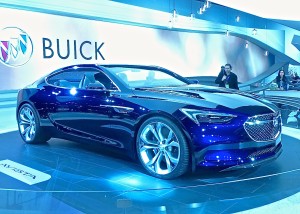
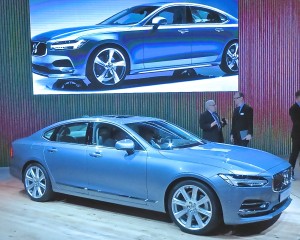
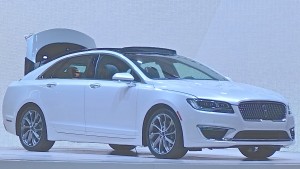
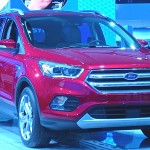
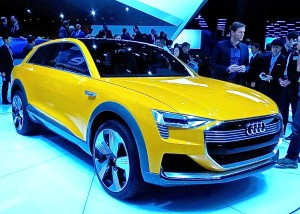
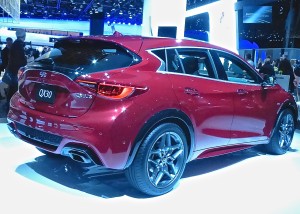

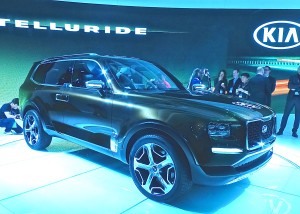
 John Gilbert is a lifetime Minnesotan and career journalist, specializing in cars and sports during and since spending 30 years at the Minneapolis Tribune, now the Star Tribune. More recently, he has continued translating the high-tech world of autos and sharing his passionate insights as a freelance writer/photographer/broadcaster. A member of the prestigious North American Car and Truck of the Year jury since 1993. John can be heard Monday-Friday from 9-11am on 610 KDAL(www.kdal610.com) on the "John Gilbert Show," and writes a column in the Duluth Reader.
John Gilbert is a lifetime Minnesotan and career journalist, specializing in cars and sports during and since spending 30 years at the Minneapolis Tribune, now the Star Tribune. More recently, he has continued translating the high-tech world of autos and sharing his passionate insights as a freelance writer/photographer/broadcaster. A member of the prestigious North American Car and Truck of the Year jury since 1993. John can be heard Monday-Friday from 9-11am on 610 KDAL(www.kdal610.com) on the "John Gilbert Show," and writes a column in the Duluth Reader.